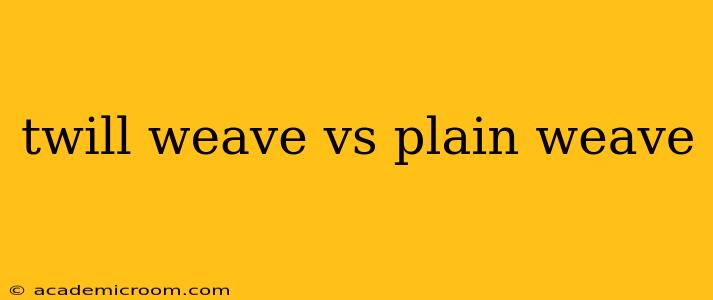Choosing the right fabric for your project depends heavily on understanding the underlying weave structure. Two of the most common weaves are plain weave and twill weave, each offering distinct characteristics that impact drape, durability, and overall aesthetic. This comprehensive guide will delve into the differences between twill weave and plain weave, helping you make informed decisions for your next sewing or textile project.
What is Plain Weave?
Plain weave is the simplest and most fundamental textile weave structure. It's characterized by a straightforward over-under pattern where the warp yarns (running lengthwise) pass over one weft yarn (running crosswise) and then under the next, repeating this pattern consistently. This creates a balanced, even fabric with a relatively smooth surface. Think of a checkerboard pattern—that’s essentially the structure of plain weave at a microscopic level.
Key Characteristics of Plain Weave:
- Simplicity: The easiest and most economical weave to produce.
- Smooth Surface: Generally results in a smooth, even fabric texture.
- Breathability: Often breathable due to the open structure.
- Transparency (depending on yarn): Can be sheer or opaque depending on the type and thickness of yarn used.
- Durability: Moderately durable; susceptible to snags and tears depending on the yarn.
- Examples: Cotton broadcloth, muslin, linen, cheesecloth.
What is Twill Weave?
Twill weave is a more complex weave structure characterized by its diagonal lines. These characteristic diagonal ribs are created by the warp yarns passing over two or more weft yarns, then under one, creating a staggered pattern that shifts with each row. The number of yarns skipped determines the steepness of the diagonal lines and the overall texture.
Key Characteristics of Twill Weave:
- Diagonal Lines: The defining feature is the prominent diagonal rib.
- Durability: Generally more durable than plain weave, offering better resistance to wear and tear.
- Drape: Often has a better drape and more body than plain weave.
- Warmth: Can be warmer than plain weave fabrics, depending on the yarn used.
- Variety: Comes in various weights and textures.
- Examples: Denim, gabardine, serge, twill cotton.
Twill Weave vs. Plain Weave: A Head-to-Head Comparison
| Feature | Plain Weave | Twill Weave |
|---|---|---|
| Weave Structure | Simple over-under pattern | Diagonal, staggered pattern |
| Appearance | Even, smooth surface | Diagonal lines or ribs |
| Durability | Moderate | High |
| Drape | Relatively stiff | Better drape, more body |
| Breathability | Generally good | Can vary depending on fabric weight |
| Warmth | Moderate | Can be warmer |
| Cost | Generally less expensive | Can be more expensive |
| Examples | Muslin, cotton broadcloth, linen | Denim, gabardine, serge, twill cotton |
What are the Advantages of Twill Weave?
- Increased Strength and Durability: The interlacing pattern of twill weave provides exceptional strength and makes it more resistant to abrasion and tearing compared to plain weave.
- Superior Drape: Twill weave fabrics often hang better, creating a more refined and elegant look in garments and home textiles.
- Warmth and Insulation: Due to its tighter weave and diagonal lines, twill weave can provide better insulation and warmth, making it suitable for cold-weather clothing and accessories.
What are the Advantages of Plain Weave?
- Simplicity and Economy: Plain weave is the most straightforward and cost-effective weave to produce, making it an economical choice for many applications.
- Breathability and Comfort: Plain weave fabrics often exhibit good breathability, making them comfortable for clothing and other applications where air circulation is important.
- Versatility: The simplicity of plain weave allows for a wide variety of yarn types and colors, giving designers significant creative freedom.
What are the Disadvantages of Twill Weave?
- Cost: Twill weave often requires more time and resources to produce, potentially resulting in a higher cost compared to plain weave fabrics.
- Less Breathability (sometimes): While some twill weaves are breathable, heavier twill fabrics can be less breathable than lighter plain weave fabrics.
What are the Disadvantages of Plain Weave?
- Lower Durability: Plain weave is generally less durable than twill weave, more prone to snags and tears.
- Less Drape: Often lacks the elegant drape of twill weave fabrics.
This comprehensive comparison should provide a clear understanding of the differences between twill weave and plain weave fabrics, aiding your selection for various projects. Remember to consider factors like intended use, desired durability, and aesthetic preferences when making your choice.
